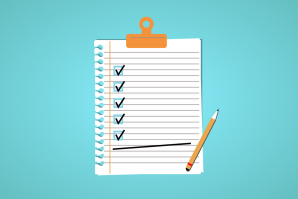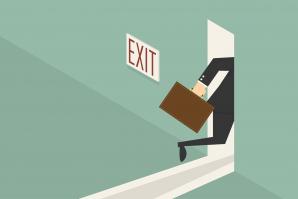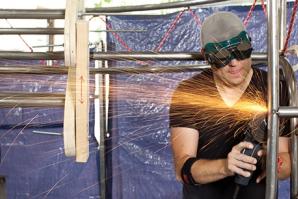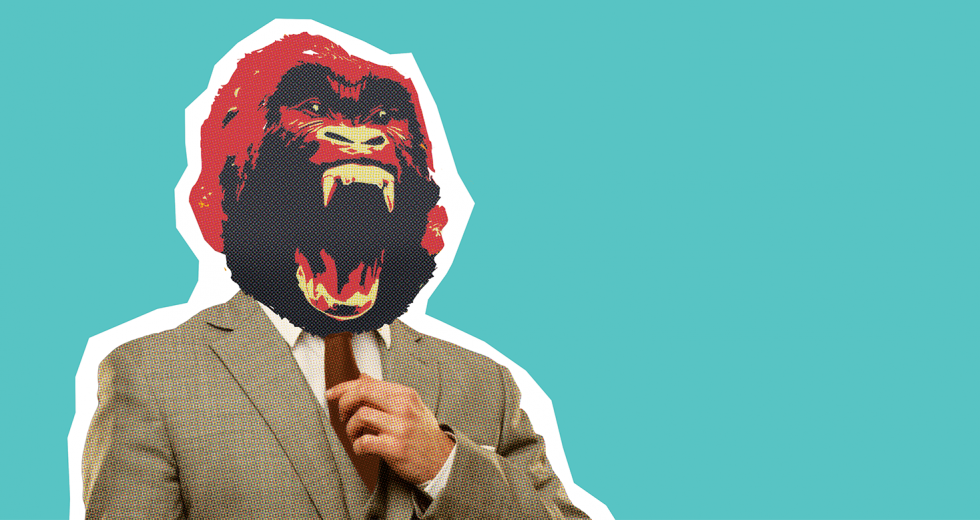You know That Guy. The one who sits five desks from you. He wears too much Axe body spray, he makes loud personal calls while you’re trying to work, he chews food with his mouth open. He’s a close-talker with his shirt open one button too far.
He’s also really good at his job. If you’re a manager, what do you do with That Guy?
It’s not a trivial issue. This sounds almost quaint, but bad manners have a cost. A lapse of manners in the workplace can poison morale, productivity and client relationships. But executive “finishing schools” can salvage careers, solve HR’s biggest headaches and even nip sexual harassment lawsuits in the bud. Welcome to the 2015 update of My Fair Lady.
Why it Matters
Two management professors spent a decade studying the role of bad manners in the office, interviewing thousands of employees, managers and human resource reps. They share the results in the book The Cost of Bad Behavior, finding that 96 percent of employees are treated rudely at some point, 50 percent are treated rudely each week and, most damningly, rudeness causes 26 percent of employees to quit their jobs.
“Incivility’s measurable costs alone are enormous. Job stress, for instance, costs U.S. corporations $300 billion a year, much of which has been shown to stem from workplace incivility,” write professors Christine Porath of Georgetown University and Christine Pearson of the Thunderbird School of Global Management. “But incivilities true impact stretches far beyond what is measurable in dollar terms. How to tally the damage done by increased employee turnover, by the disruption of work teams, by the waning of helpful behavior or by the tarnishing of corporate and individual reputations?”
They note that Cisco, for example, ballparks these annual costs at $8.3 million. Its research found that once employees feel they’ve been treated rudely, 50 percent put less effort into the job. It’s basic human nature: Why should I work for that jerk?
“Etiquette is the body of rules that all of us create as time goes on. It’s the norm. It’s the protocol. And the rules do change.” Rebecca Black, co-founder, Etiquette Now
But rudeness is only a small slice of the larger problem. Since the days of Mad Men or even the walled offices of the ’90s, the workplace has become more open, more casual and, to use some corporate buzzwords from the org charts, “flatter.” New questions abound. Is it appropriate for men to hug women? What can be tweeted? Where is it acceptable to puff e-cigarettes? Are nose rings permissible?
The rise of the millennial generation hasn’t helped. “Millennials can’t make eye contact. They can’t leave voicemail messages. They have trouble making conversation,” says Patricia Fitzpatrick, founder of The Etiquette School of New York. “They want to lean over, because they’re at the computer all day. They tend to have bad posture.” While millennials might be uncomfortable in a formal restaurant, older generations are flummoxed by new demands for an online persona. As Miss Manners puts it, “If the younger generation can’t eat, the older generation can’t tweet.”
So if you’re a CEO and you want your staff to play nice, how do you bring about change? How do you make it stick?
One option is to make niceness an official policy. A company based in New Orleans, Ochsner Health System, uses something called the “10/5 rule.” Employees are required to make “eye contact with anyone within 10 feet and greet anyone within five feet. There is also a no-venting rule,” reports The Wall Street Journal’s Rachel Feintzeig. The company puts its money where its mouth is as “employee evaluations take into consideration whether workers follow the procedure.” (It’s a struggle to imagine those annual reviews: “Katherine, great work beating your sales goals, but we can’t give you a raise because you never smile at the janitor.”)
This type of policy, as you would suspect, is rare. Which is why Sacramento companies — Kaiser Permanente, the American Red Cross, lawyers, farmers — have booked the services of Davis-based Etiquette Now. The services offered by co-founder Rebecca Black and her team transform the larvae of That Guy into a genteel office butterfly.
“It costs a massive amount of money to fire someone,” Black says. “The employer would much, much rather train that person correctly. But they don’t have the tools.” Since it makes little economic sense for companies to have a CMO — chief manners officer — they outsource.
Pygmalion
I needed to see a finishing school in action, so I attended the dining skills and table manners class at The Etiquette School of New York, run by Fitzpatrick. About a dozen young professionals sat around a table in a fancy-ish Italian restaurant, politely nodding as Fitzpatrick, who has impeccable posture, explains the difference between Continental and American dining styles.
“With Continental, your fork always stays in the left hand,” says Fitzpatrick, making eye contact with each client. A few of them switch their forks to the left.
I think of myself as fairly well-mannered (don’t we all?), so I was embarrassed to realize that I, too, have plenty to learn. We sleep-walk through most of life’s decorum. Who sits next to the host at a business lunch? Does the senior person go to the left, right or across the table? What’s the polite method of tearing off a hunk of bread? When finished with your meal, at what angle, exactly, do you position your silverware?
Related: “Mind Your Manners — Top 4 etiquette schools in the Capital Region”
Frankly, I expected a bunch of uncouth dunces who slurped their soup, dropped F-bombs and failed to wear deodorant. I’d come to the wrong place. Instead, they were poised, courteous, well-groomed. These weren’t screw-ups who needed some remedial course in manners; these were ambitious professionals who wanted to sharpen a certain skill set, just as, say, an Excel power-user might take an advanced class to hone their skills in Macros. (There was also, at the end of the table, an older guy in a sweatshirt. That Guy.) Fitzpatrick says 75 to 90 percent of her clients are working professionals, and the ratio is roughly two-thirds women.
“They’re people who want to get to the next level. Or they’re young, and they’re just starting out,” she says. “I wasted a large percentage of my 20s not knowing what to do; these people are very smart to do this sooner rather than later.”
One woman at the luncheon is with the district attorney’s office, one is starting her own firm as a fashion stylist, and sitting to my left is Andrie Kazamias, a consultant for Deloitte with a focus in health care. She’s no rube. She took the class to add a layer of polish, telling me that as a health care professional, she attends a nonstop stream of client and team dinners and “first impressions are made on a daily basis. Etiquette is one factor that adds to how people will view you.” Weeks later, she told me that she feels more confident with clients, she’s better at introductions, and that she notices a difference in how she’s perceived. The effect is subtle but real. Takeaway: Even if this change in perception is imagined (how can you really know?), that boost in confidence, in and of itself, has merit. The placebo is a powerful thing.
Table manners, or lack thereof, can doom a business deal. Sloppy eating can botch an interview. (Fitzpatrick tells a tale — you’ve likely heard a similar variant — of the investment banker who takes an interviewee to lunch. When the candidate salts his food before tasting it, he loses the job.) Years ago I had a boss who chomped his food so loudly that I timed my entire schedule around avoiding him at lunch, even lying about why I couldn’t see him at noon.
Sacramento’s Rebecca Black frequently sees this behavior. At an architecture firm, “one employee made everyone sick to their stomach in the lunch room, so they brought us in to fix his manners,” she says. The firm put everyone through table manners training — even though 99 percent of employees didn’t need it — just to avoid singling out That Guy. He was never embarrassed, and the problem was solved.
Other issues that Fitzpatrick and Black see time and again:
Attire
“Business attire serves two important purposes, both of them symbolic. First, it conveys a seriousness of purpose. The businesswoman who shows too much cleavage can argue until she is blue in the face that gentlemen should not be looking, but no one is watching her face,” explains Judith Martin, better known by the pen name Miss Manners, in her (surprisingly entertaining) book Miss Manners Minds Your Business. “Second, business attire gives an impression — possibly an incorrect one — of competence. The surgeon who visits your bedside dressed for his golf game may be a miracle worker in the operating room, but does he make you feel better? One is more inclined to believe in the advice of a pharmacist who wears a lab coat than that of one who wears a cut-off T-shirt.”
This can lead to awkwardness. If you’re a male supervisor, and a young female employee wears low-cut shirts, how do you bring this up? Men tend to be lousy at this type of thing. It’s more discreet to let Black do the mentoring.
“It’s tricky, but I do a lot of the coaching with pictures, slide-shows and videos, showing how attire can reflect a negative image. Once they see those images, they make the connection before I even say anything,” she says.
It’s not just for women. Fitzpatrick once coached a man in his mid-30s whose “shirts would gape open. He didn’t wear an undershirt, he came in with sneakers and he cleared his throat all day long. He was annoying people all day.” Thanks to the coaching, he kept his job.
Gossip
“Gossip can create a toxic environment. It makes people want to leave,” says Black. Many clients bring her in just for this reason.
Voice
“Thirty-eight percent of your first impression is your voice,” says Fitzpatrick. Most of us have no idea what it sounds like. When I transcribe my interviews, I’m ashamed by the sound of my own voice — hesitant, too slow, then too fast, littered with ums and I’m sorrys. This is part of her program: She records everyone’s voice and lets them hear how they sound, suggesting daily exercises if necessary. “Unfortunately, problems with voice gives a perception that they’re less smart,” says Fitzpatrick. “That might not be true, but it’s the perception.”
Appropriateness
“Appropriateness,” that catch-all euphemism for anything that has to do with sexual issues in the workplace. Small companies can’t invest much in the way of HR. So if there’s a male employee who skirts towards the dark edge of inappropriateness, they can send him to Black. She once counseled an IT professional who just didn’t get it and had to be taught the basics of what can and cannot be said to women. This is, first and foremost, the right thing for women, but it doesn’t hurt that it could prevent a lawsuit. “It’s less awkward for me to do it than for the company to do it themselves,” Black says.
Not Listening
Black began her career as a grade-school teacher, and she noticed the same lapses in etiquette between 9-year-olds and CEOs: a failure to listen. This causes problems whether it’s “a kid throwing a ball at someone on the playground or an executive mowing over someone’s idea in the conference room.”
Casual Conversation
Two attorneys in their late 20s — a married couple — came to Black to brush up on their people skills. They knew it could help with clients. So she gave them homework called “conversations about nothing,” where you practice chatting to strangers in the grocery store. “But why would I want to talk to these people?” the female attorney asked.
Oh my goodness, Black thought.
“No Sweetie, this will just help you talk to our clients better,” the husband said.
This is the millennial conversation problem: Why would I want to talk to these people? Like table manners and attire, it can be fixed.
Etiquette is many things, but it’s not unchanging. It evolves. So must we. “One of the main misconceptions of etiquette is that it’s old-fashioned, it’s uppity and it’s out of date with today’s world,” Black says. “Etiquette is the body of rules that all of us create as time goes on. It’s the norm. It’s the protocol. And the rules do change.”
Some of us know these new rules instinctively. And then there’s That Guy. If all else fails with That Guy, here’s my one final etiquette tip: Print out this article and anonymously drop it on his keyboard. You’re welcome.
Recommended For You

Unpolished Problems
How to politely enforce your dresscode
“We have a male employee whose shirt buttons pop open, leaving his skin exposed. We also have a female employee whose tight clothing reveals her undergarments. This is a horribly awkward and uncomfortable situation, but their attire is not appropriate for the office. How should HR address this?”

New Year’s No’s
Let’s make a list some goals to avoid
This year, I’m focusing on “no.” It’s a magical word rarely used when it comes to answering work emails on vacation, committing to stuff you swore you would avoid and attending events that drain productivity from your day. And for what? If you count the number of really valuable nonmandatory meetings, networking mixers and fundraisers you attended in 2014, how many would you come up with?

Winners Know When to Quit
4 situations where it's OK to walk away
Business owners and entrepreneurs are often lauded for working against all the odds and being too stubborn to quit. But in reality, there are times when quitting is the best option available.

Independents’ Day
Look out 9-to-5, the freelancers are coming
Casey Marshall is hunched over his phone, furiously scrolling through his Twitter feed in search of a photo of Waste Management’s promotional robot, whose broken axle he fixed back in March. “Someone came into the Hacker Lab and needed his robot repaired,” he says, grinning, “and I was like, ‘I gotta do that.’”



